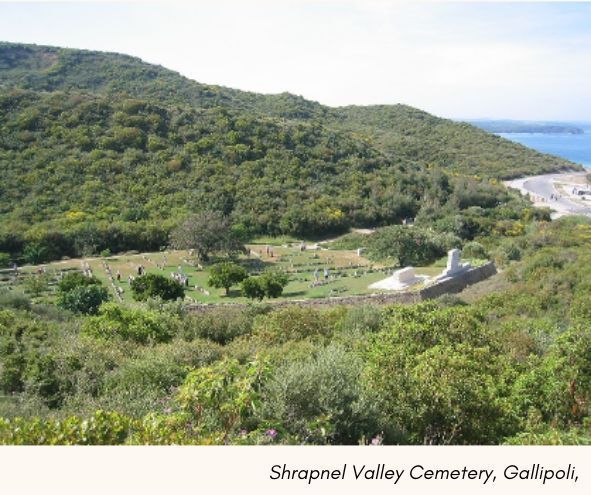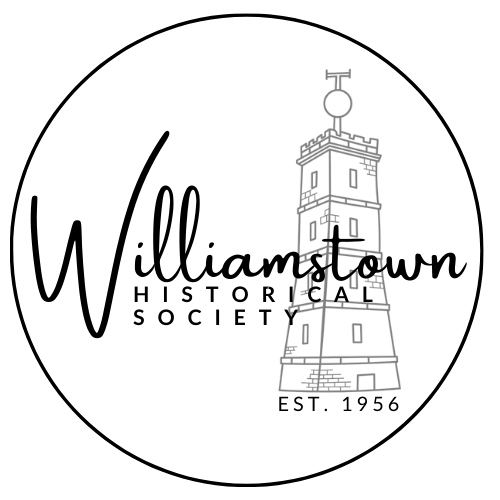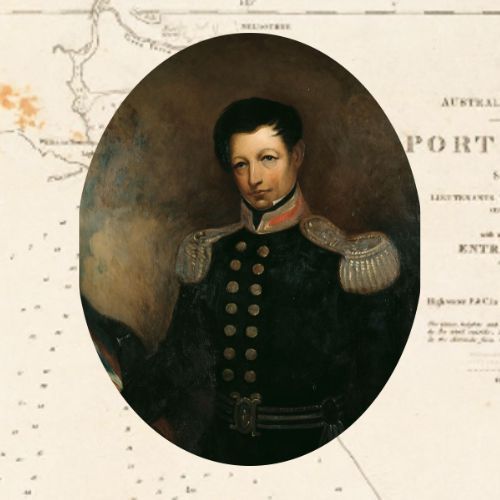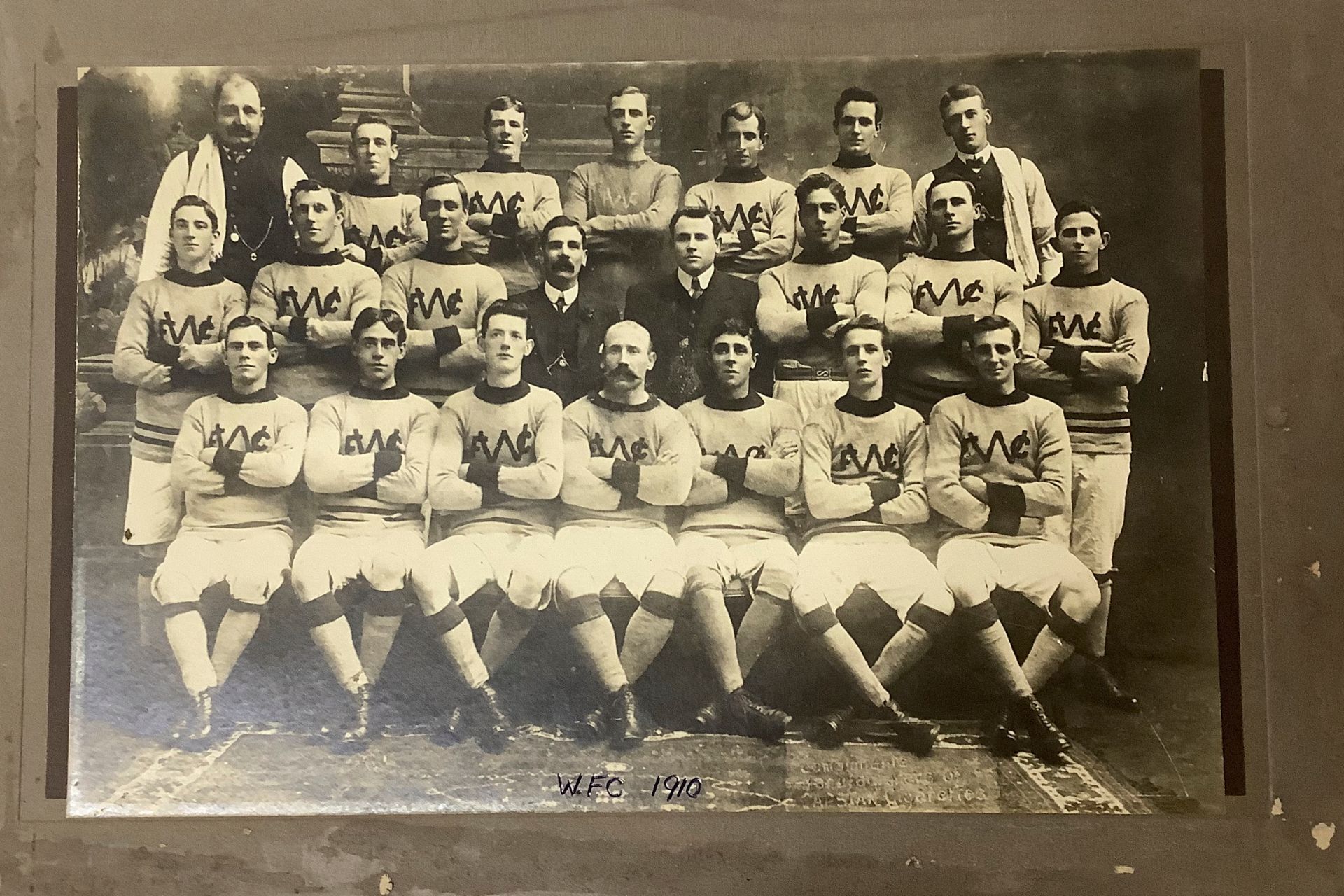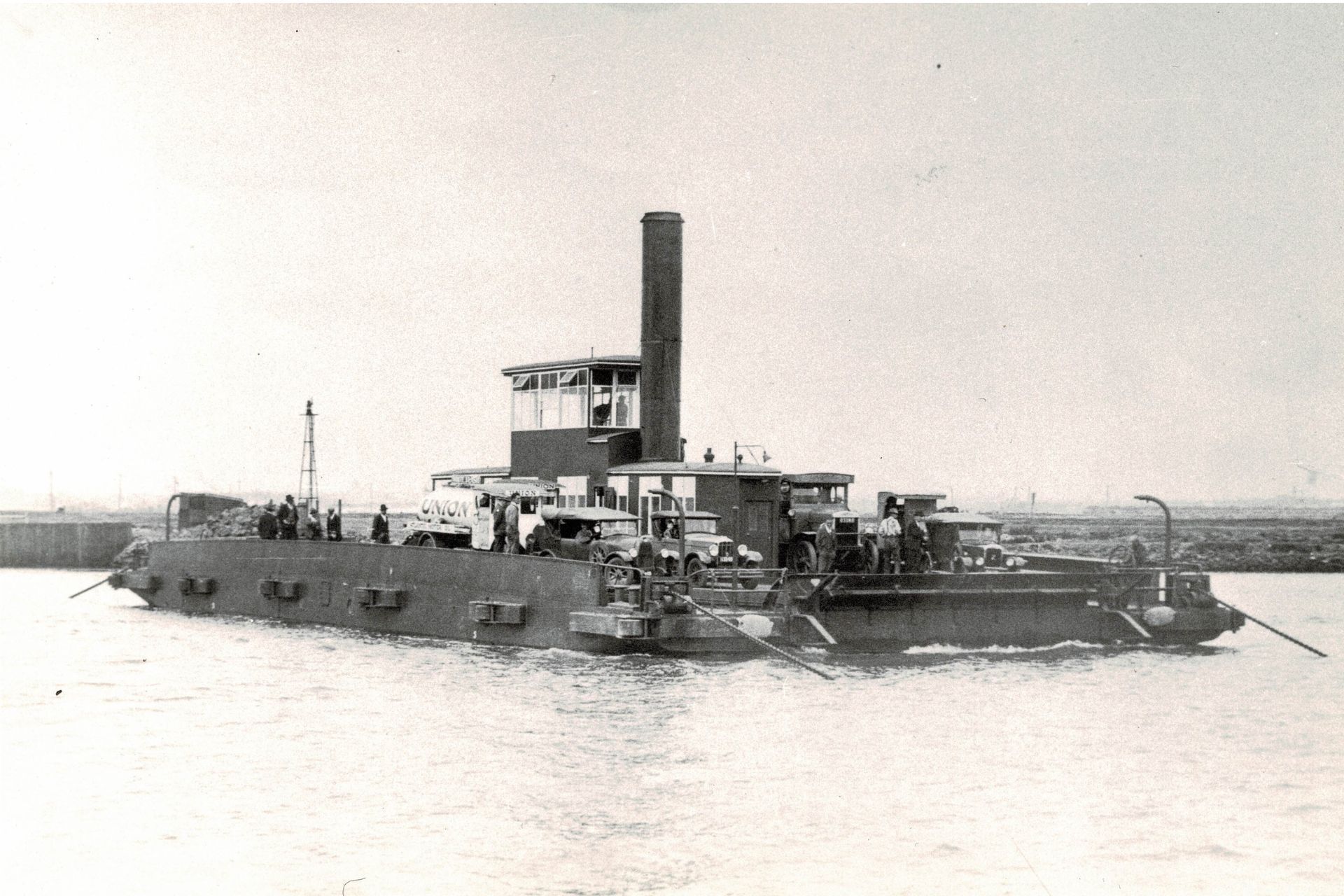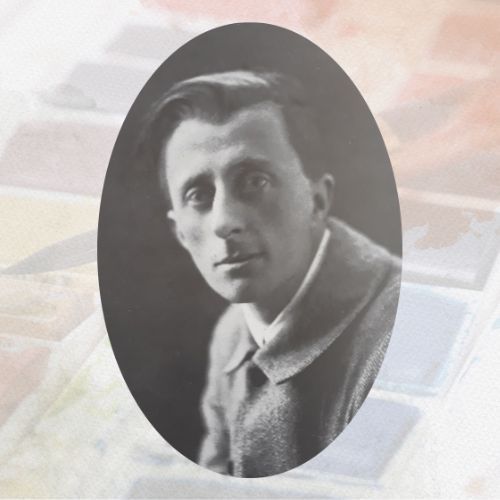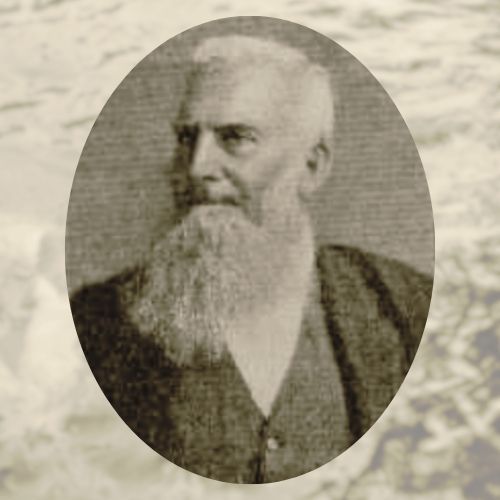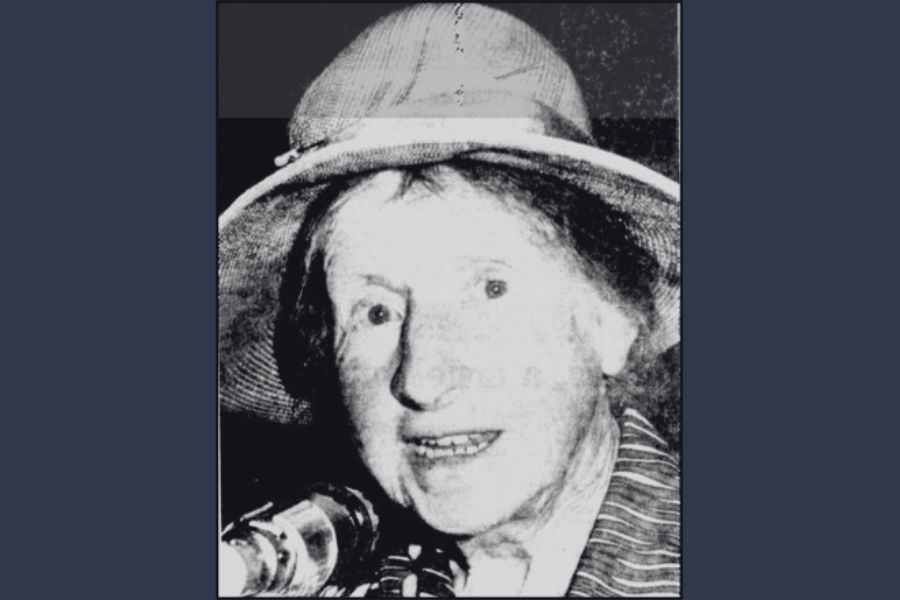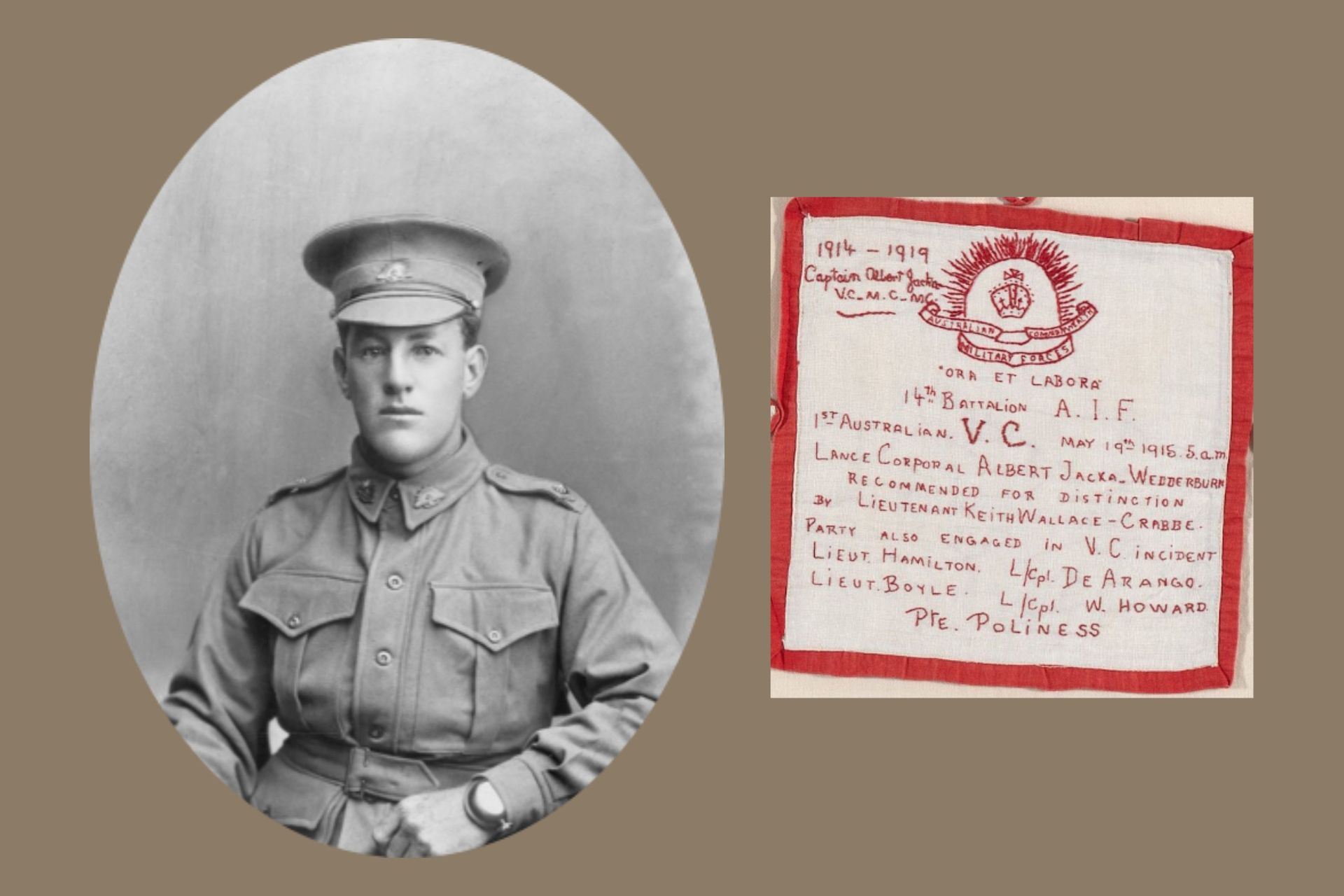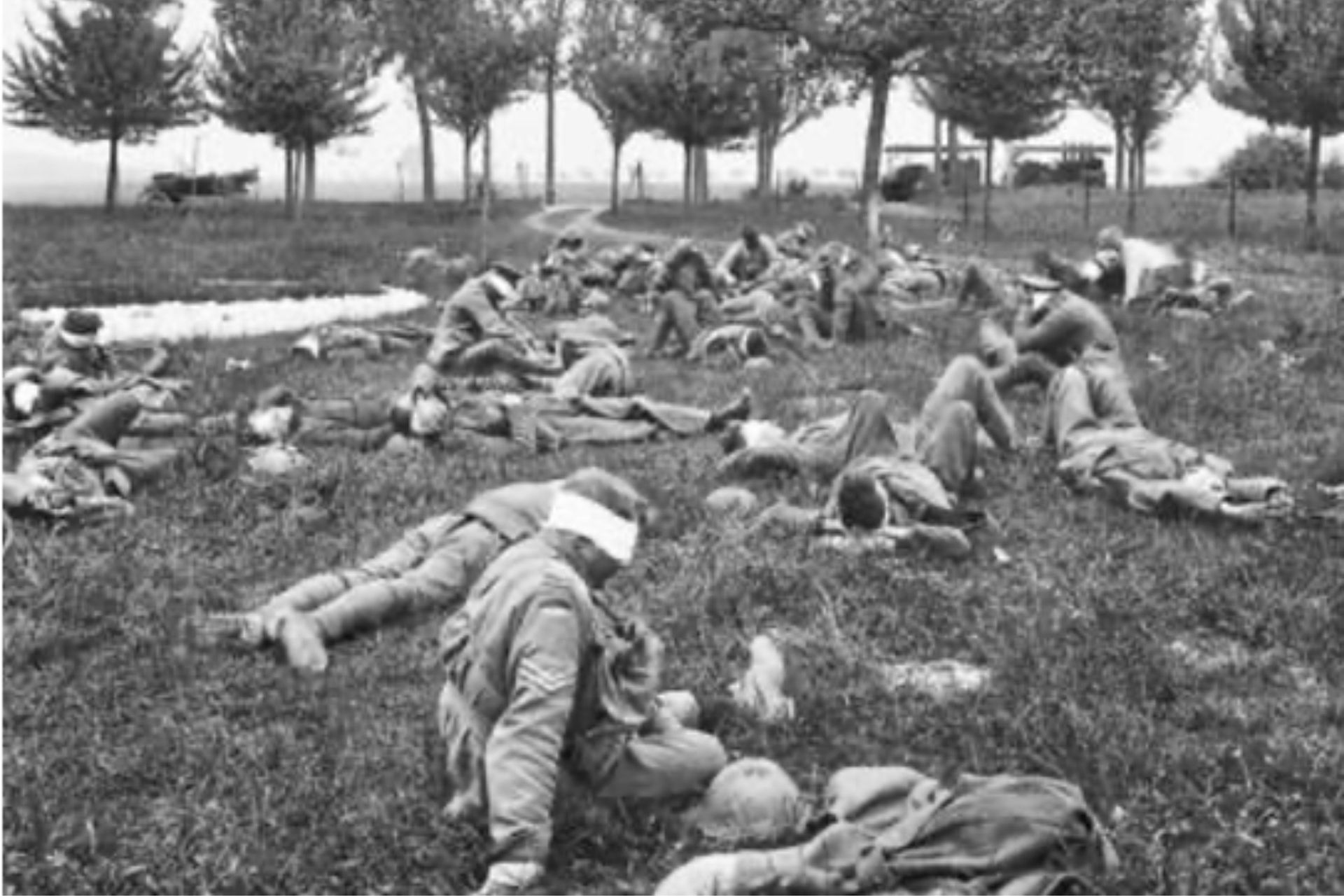Australia's first recipient of the Victoria Cross
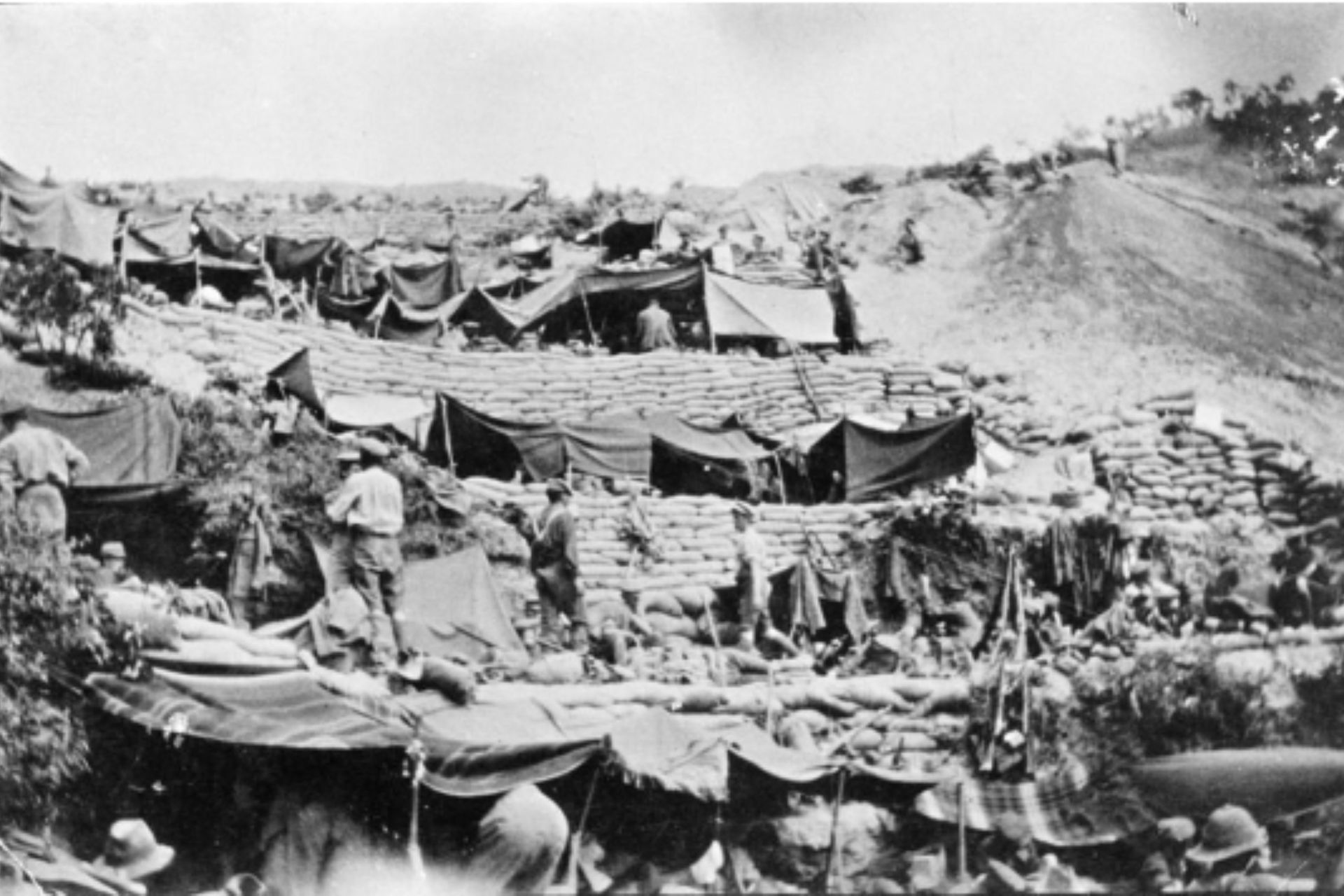
Courtney's Post and Australia's First Victoria Cross recipient - Albert Jacka
This square, number 60 on our quilt, lists all of the men involved in the incident where Albert Jacka was recommended for his actions at Gallipoli leading to him being awarded the Victoria Cross, the first Australia recipient to do so during World War I.
The incident occurred 19 May, 1915 at Courtney’s Post the centre post of three - Quinn's, Courtney's and Steele's - that occupied precarious, but critical, positions along the lip of the Monash Valley, above ANZAC Cove.
After two days of heavy fighting, at around 4 am, a party of ten men from the 14th Battalion who were holding a short section of the trench at Courtney’s Post, had a number of bombs thrown into their vicinity, two were killed and four others wounded. Seven or eight Turkish soldiers then jumped into the trench and chased the remaining men out of the trench. Lance-Corporal Jacka, who was in the communication trench nearby, heard the commotion and immediately jumped from the communication trench up to the step behind the last section of the fire trench, which had not yet been reached by the Turks.
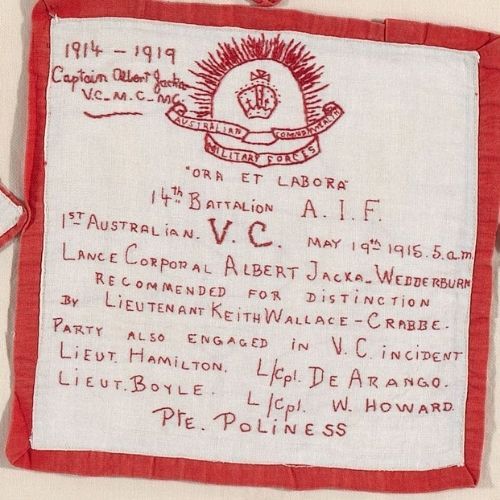
From there Jacka fired shots into the trench wall, holding the Turks at bay. Lieutenant Hamilton then climbed out of his trench and ran to assist firing his revolver at the Turks, but was quickly shot in the head. Another officer, Lieutenant Wallace-Crabbe, was sent to the sector. He attempted to join Jacka by crossing the mouth of the same communication trench where Hamilton had been but Jacka stopped him by shouting "Look out, sir, the Turks are in here”.
Wallace-Crabbe then called for volunteers to assist Jacka saying "It's a tough job. Will you back Jacka up?". One of the leading men answered. "It's sink or swim; we will come, sir," and the leading three went forward – Lance Corporal S. De Araugo, Lance Corporal W. Howard, and Private Poliness.
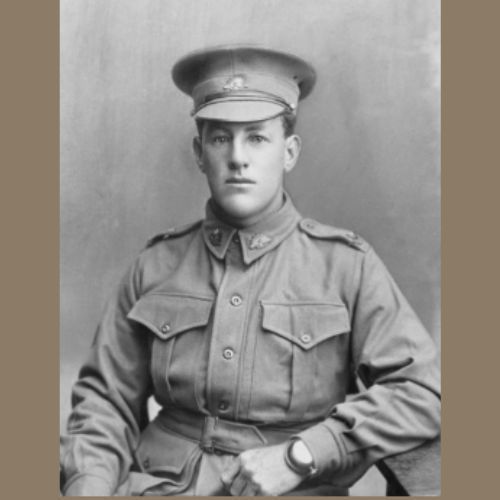
Jacka then leapt safely into the captured trench but Lance-Corporal Howard following him was shot three times as soon as he came into view. Jacka realised the plan was not going to work and stopped the others from following. He then dashed back, dragging his wounded mate to safety.
Jacka then climbed upon the fire step, and was trying to get a view of the enemy when Lieutenant Wallace-Crabbe suggested that he should go round another way while he and the remainder of the party kept the Turks employed in front. Jacka who was a man of few words, remarked, 'Right-o.' and was off like a shot. A second later there were five reports in quick succession, and when Poliness came in at the opposite end of the trench, Jacka was wiping the blood from his bayonet, with seven dead Turks at his feet.
The trench was now clear of Turks and Jacka remained alone there for the next hour, until the sun rose and when Lieutenant Wallace-Crabbe deemed it safe to determine the outcome of the assault. One of the most famous details of the whole incident is that Crabbe found Jacka sitting amidst Turkish and Australian dead with an unlit cigarette in his mouth. "Well, I got the beggars, sir”, he said. He had shot five, and had bayoneted the remaining two.
His citation for the Victoria Cross reads:
"For most conspicuous bravery on the night of the 19th–20th May, 1915 at "Courtney's Post", Gallipoli Peninsula. Lance-Corporal Jacka, while holding a portion of our trench with four other men, was heavily attacked. When all except himself were killed or wounded, the trench was rushed and occupied by seven Turks. Lance-Corporal Jacka at once most gallantly attacked them single-handed, and killed the whole party, five by rifle fire and two with the bayonet."
[Supplement to the London Gazette No. 29240, published 23 July 1915. p. 7279]
References:
http://www.hellfirecorner.co.uk/jacka.htm
Kyneton Guardian, Thursday 9 September 1915, page 4
Kalgoorlie Miner, Tuesday 27 July 1915, page 8
West Australian, Tuesday 10 August 1915, page 7
Apart from Albert Jacka, the other soldiers involved in the incident were:
Lieutenant Keith George Wallace-Crabbe
Lieutenant Keith George Wallace-Crabbe, the officer who recommended Albert Jacka for his actions, enlisted on 19 September, 1914 into the 14th Infantry Battalion.
He was a 20-year-old Clerk when he enlisted as a 2nd Lieutenant living at 17 Byron Street, St Kilda. He was born on 28 July, 1894, the 4th son of George Wallace-Crabbe, a Legal Manager, and Harriet Teresa (nee Cluny). His mother was President of the 14th Battalion Comforts Fund.

Keith was educated at Trinity Grammar School, Kew, Victoria, and held a good position as a Clerk in a large business firm. He had joined the 46th (Brighton Rifles) Regiment Australian T.F., some time prior to the war, and on the outbreak of war was a Captain. He stood 5 feet 10 ½ inches, and was given a commission as 2nd Lieutenant of the 14th Battalion Australian Imperial Force on enlistment and left Australia with the second reinforcements. After spending some time in Egypt, he was sent with his Battalion to the Dardanelles, and took part in the landing at ANZAC Cove on 25 April, 1915. He was almost continuously in action for six months. He was promoted to Lieutenant not long after landing, in May 1915.
Writing to his father from Gallipoli on 20 May, he gave the following account of the incident that earned Jacka his VC:
"We have just passed through two very strenuous days and nights here. The Turks were heavily reinforced, and made an attack on our position, and we inflicted terrible loss on the attackers. One little incident during the attack may interest you. The Turks, eight in number, got into a small section of our trench, and as I was near we had to clear them out. Lieutenant Boyle was wounded, and Lieutenant Hamilton killed in tackling the same job, before I came on the scene. I got four boys, who made a rush at them, but were repulsed with two wounded. Then I made as if we were going to attack again, and threw some grenades at them, and the Lance-Corporal whom I have written the memorandum about rushed in at the other end and fired ten shots. The copy enclosed is what I have written to get Jacka a medal for conduct. The General was greatly pleased with the way the attack was repulsed right along, and Major Rankine, who was in command of our trench, got great praise. All of us were personally congratulated by General Godley, Brigadier Monash and Col. Courtney.”
This is an extract from my report to headquarters:
“I beg to report that at 5 a.m. on 19 May Lance-Corporal Jacka, No. 4 Company, 14th Battalion Australian Imperial Force, under my instructions, rushed in at one end of the trenches whilst I had a party engaging them at the other end, and shot seven Turks who had forced and obtained a section of our trenches. Lance-Corporal Jacka and a party of four had tried a previous bayonet rush, but were repulsed with two casualties to us.”
Lieutenant Wallace-Crabbe was mainly responsible for the ascendancy which the 4th Brigade established on the enemy in bomb fighting. He was killed while leading a desperate charge at Hill 60 at Suvla Bay, Gallipoli, 22 August, 1915.
Jacka reported on his death:
"Men who saw this gallant officer lying dead, say that he died with a sweet smile on his face. 'Killed in action' was, perhaps, all that you were told, but what death is there as noble as this, when you meet it while leading your men in the thick of battle and fighting for your King and country against such odds? The attack was made by 100 men from the 14th Battalion, 100 from the 13th and 50 from the 16th. Lieutenant Crabbe being such a brave, cool officer he had charge of the men. It was in this ill-fated charge that he met his death. It was a desperate attack, and while leading his men, a smoking revolver in his hand, he fell, shot through the head. His sad and untimely death is greatly mourned by us. He was a great favourite with all the men who knew him, and had made a name for himself as a gallant leader, and had he lived through this engagement a very high honour would have been conferred upon him.”
Lieutenant Keith Wallace-Crabbe’s body was never recovered and he has no known grave, and is remembered at the Lone Pine Memorial, Gallipoli, Turkey.
References:
National Archives of Australia: Defence and war service records
Trove

Lieutenant Henry Noel Boyle
Henry Noel Boyle was born in 1896 in Collingwood, Victoria to parents John Francis Boyle and Cecilia Mary (nee Little). He entered the Royal Military College, Duntroon on 7 March, 1912 when he was 16 years old and graduated early on 2 November, 1914. He was a member of the guard of honour at the naming ceremony of Canberra on 12 March, 1913.
Henry enlisted on 3 November, 1914, the day after graduating from Duntroon, entering as a Lieutenant in the 14th Infantry Battalion. His description on his enlistment papers indicate he was 5 feet 7 inches tall, had blue eyes and a fair complexion. Prior to his enlistment and training at Duntroon he was living with his family in Abbotsford.

He landed on Gallipoli on 25 April, 1915. On the night Albert Jack won his VC, Henry was in a communication trench opposite Jacka and was hit in the neck and ear when attempting to sight the enemy. After treatment in hospital in Egypt, he rejoined the 14th Battalion on 20 June, 1915 with the rank of Captain even though he was only 19 years of age.
During the Battle of Sari Bair in early August 1915, the 4th Brigade, which included the 14th Battalion, was part of an attempt to seize the heights above the ANZAC positions at Gallipoli. Boyle was again injured, this time receiving gunshot wound to his left arm during the fighting which caused a fracture just above the elbow. The injury ended Boyle's active part in the war and he returned home in March, 1916 and was officially discharged medically unfit on 31 January, 1917.
Henry Boyle served again during WWII in both New Guinea and New Britain.
On his return from WWI he married Margaret Mary Condon in 1920. He died in Kew, Victoria on 21 January, 1983.
His older sister, Mary Genevieve Mavica Boyle, was the Assistant Honorary Secretary of the 14th Battalion Comforts Fund.
References:
National Archives of Australia: Defence and war service records
Trove
http://www.memorial.act.gov.au/search/person/boyle-henry-noel
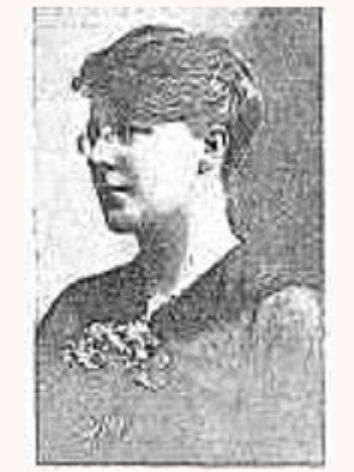
Lance Corporal Stephen de Araugo
(his surname is spelt incorrectly on the quilt)
Stephen de Araugo was born in 1894 to parents Manuel de Araugo and Catherine (nee Jones). He enlisted on 1 October, 1914 as a 19 year old, into the 14th Infantry Battalion with the rank of Private. Prior to his enlistment he was working as a Driver in Bendigo.
He left Melbourne on HMAT Ulysses on 22 December, 1914 and after spending a number of months training in Egypt, he landed at ANZAC Cove Gallipoli on 25 April, 1915.
On the night Albert Jack won his VC, Stephen was with his two mates from Bendigo, Lance Corporal William Howard and Private Frank Poliness, holding the Turks at bay at the other end of the trench to Albert Jacka.
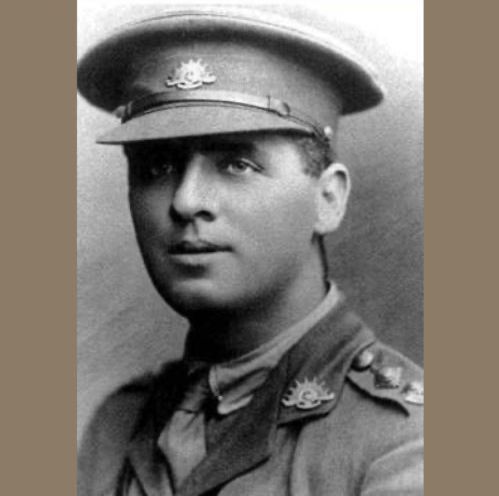
Private de Araugo was also involved in the Battle of Lone Pine on 7 August, 1915 coming through the conflict unscathed.
On 1 December, 1915 he was promoted to Corporal, then to Lance Sergeant on 27 January, 1916, and then to Sergeant on 14 April, 1916.
He departed from Alexandria on 1 June, 1916 disembarking at Marseilles on 8 June, 1916 heading for the fighting at the Western Front where he was again promoted, to No. 49 Company Sergeant Major on 6 August, 1916.
While fighting at Pozières between 6-13 August, 1916, he was ‘Mentioned in Despatches’ for his ‘distinguished and gallant service, and devotion to duty’ which was officially gazetted on 2 January, 1917.
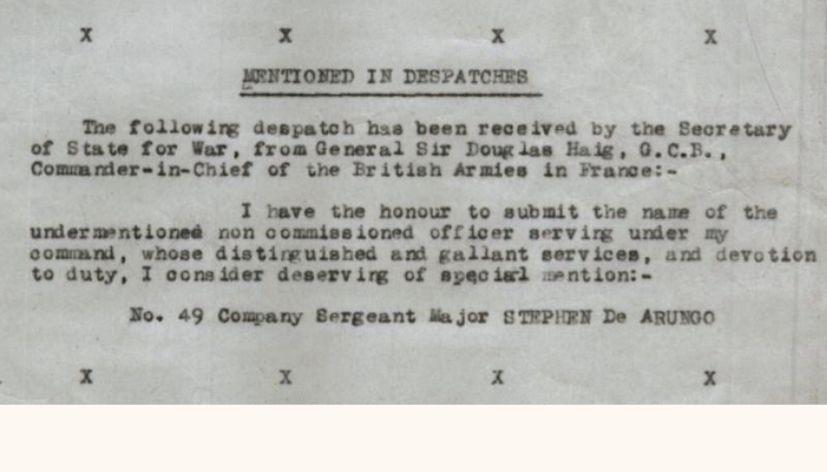
He was also involved on the fighting at Bullecourt in April, 1917 and was promoted again to the rank of 2nd Lieutenant on 6 October, 1917 while serving in Belgium. He then was part of the fighting during the German Spring Offensive in March, 1918 and was promoted again to the rank of Lieutenant on 1 April, 1918.
In mid-April, 1918 he became ill with pneumonia and was transferred to the 45th Casualty Clearing Station and then to England to the 3 London General Hospital in Wandsworth. He was declared medically unfit to return to service and returned home to Australia where he was officially discharged on 1 November, 1918.
On his return from WWI he married Emily Elizabeth McKenna in 1919. He went to work for the Victorian Railways, and died in Heidelberg, Victoria on 23 July, 1953 at 58 years old.
References:
https://vwma.org.au/explore/people/209446
National Archives of Australia: Defence and war service records
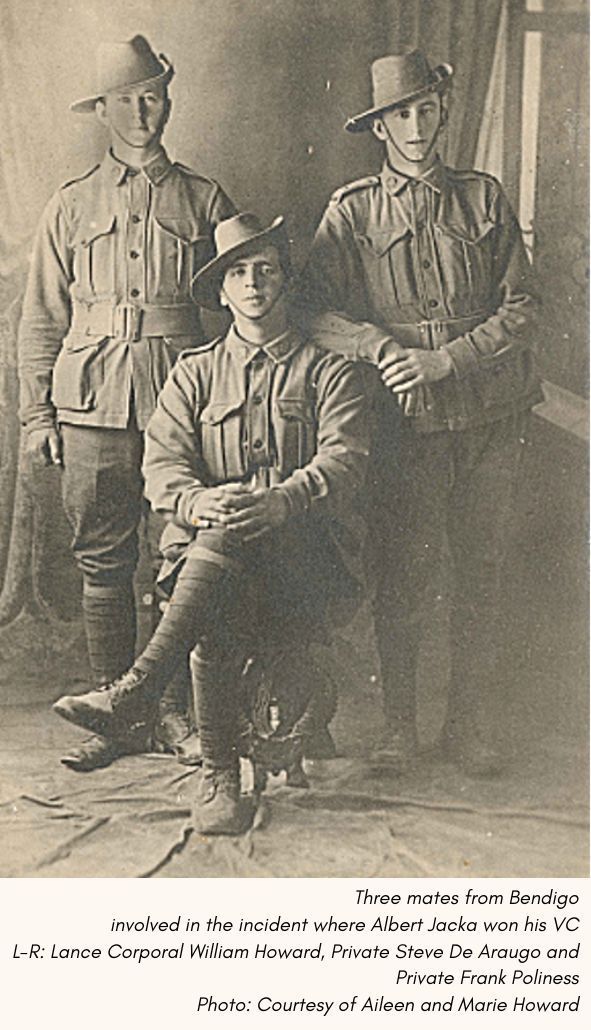
William Donald Howard
William Donald Howard was born in 1891 in Bendigo, Victoria to parents Robert Howard and Catherine (Nee Pell). He enlisted on 14 September, 1914 as a 24 year old, into the 14th Infantry Battalion with the rank of Private. Prior to his enlistment he was working as a Driller in Bendigo.
He left Melbourne on HMAT Ulysses on 22 December, 1914 and after spending a number of months training in Egypt, he landed at ANZAC Cove Gallipoli on 25 April, 1915.
On the night Albert Jack won his VC, William was with his two mates from Bendigo, Private Stephen de Araugo and Private Frank Poliness, holding the Turks at bay at the other end of the trench to Albert Jacka.
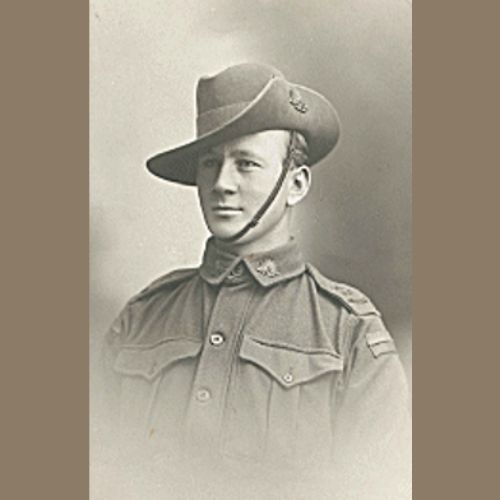
His daughters Aileen and Marie Howard of Bendigo described his injuries in October, 2007:
One bullet hit a metal binding on a book in his uniform pocket and deflected enough to blow out. A second bullet hit a rib, deflected and also blew out. We feel that it may have taken a rib as the wound in that area was as long as a biro.
He told us that those two bullets were two inches from his heart and if they had blown in they would not have bothered to look at him. The scar in that area was as long as a biro. A third bullet shattered into his right hand.
When the action was over Dad heard the stretcher bearers say, “grab him or he will go”, and he went out to it. They dressed his wounds. He came to in the hot sun with a Minister putting an ‘Urgent’ tag on his stretcher. He was then put into a dugout for the rest of the day as he could not be taken to the beachhead until dark and this was dawn.
Dad’s friends had walked as they thought he would die, and probably Jacka would have thought the same thing after he saw him. When Jacka came to see how Dad was, he told him that he had been told he was to be put up for an award or something, and that, “Ooh I did my bloody block.” Exact words as Dad told us.
He had numerous pieces of shrapnel removed over his life, and as we told you when you called, as he got older and thinner, he had them appearing on his knee, elbow and even forehead. He said, “They’ve been there so long, they may as well stay”.
labour at engineering and ammunition dumps
National Archives of Australia: Defence and war service records
https://www.hardjacka.com/howard.html
https://anzacportal.dva.gov.au/wars-and-missions/ww1/personnel/australian-pows
Francis Edward Poliness
Francis Edward Poliness was born on 18 December, 1893 in Geelong, Victoria to parents Edward Salvatore Poliness and Jane (nee Bourke). He enlisted on 14 September, 1914 as a 20 year old, into the 14th Infantry Battalion with the rank of Private. Prior to his enlistment he was working as a Metal Polisher in Bendigo.
He left Melbourne on HMAT Ulysses on 22 December, 1914 and after spending a number of months training in Egypt, he landed at ANZAC Cove Gallipoli on 25 April, 1915.
On the night Albert Jack won his VC, William was with his two mates from Bendigo, Private Stephen de Araugo and Private William Howard, holding the Turks at bay at the other end of the trench to Albert Jacka.
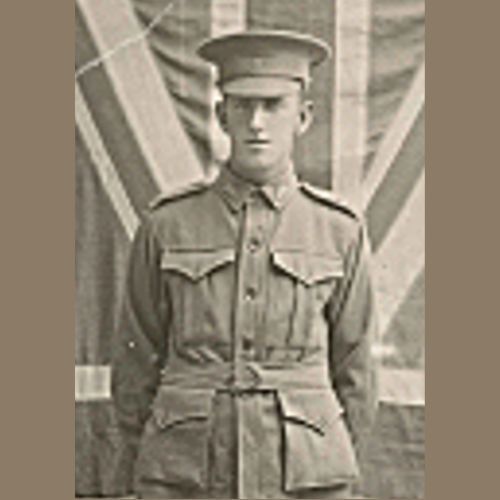
William Hugh Hamilton
Lieutenant William Hugh Hamilton was born on 24 May, 1894 in Natimuk, Victoria to parents Robert Hamilton and Margaret (nee Burn). He entered the Royal Military College, Duntroon with the second intake of cadets on 7 March, 1912 and was a member of the guard of honour at the Canberra naming ceremony on 12 March, 1913 and graduated from RMC on 2 November, 1914.
William enlisted on 3 November, 1914, the day after graduating from Duntroon, entering as a Lieutenant in the 14th Infantry Battalion.
He left Melbourne on HMAT Ulysses on 22 December, 1914 and after spending a number of months training in Egypt, he landed at ANZAC Cove Gallipoli on 25 April, 1915.

During the incident when Albert Jack won his VC, Jacka was at the end of the trench on a firing step firing into the trench wall to keep the Turks at bay until reinforcements were sent. Lieutenant Hamilton heard the shouts of "Turks in the Line" and ran up jumping into the trench firing his revolver at them as they jumped into the bay. He kept firing until one of the Turks shot him through the head and he was instantly killed.
He is buried near ANZAC Cove in Shrapnel Valley Cemetery, Gallipoli, plot 4, row A, grave 17.
References:
National Archives of Australia: Defence and war service records
http://www.memorial.act.gov.au/search/person/hamilton-william-hugh
